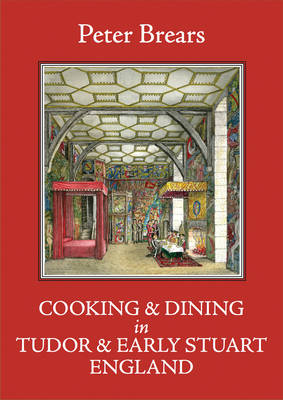
- Afhalen na 1 uur in een winkel met voorraad
- Gratis thuislevering in België vanaf € 30
- Ruim aanbod met 7 miljoen producten
- Afhalen na 1 uur in een winkel met voorraad
- Gratis thuislevering in België vanaf € 30
- Ruim aanbod met 7 miljoen producten
Zoeken
€ 76,45
+ 152 punten
Omschrijving
The first volume of Peter Brears' history of English cookery covered the Middle Ages and won the Andre Simon Award for the best food book of 2009. This book, over ten years in the writing treats a period in English history when new foods were being introduced from the New World, and new styles of cooking were being adopted from France and Italy. Uniquely, the author combines an account of the cookery with a close look at the practical arrangements, the kitchens and dining halls, where that food was cooked and consumed. His prose is enlivened by his drawings - as accurate as can be - which lay bare to the modern reader just what was going on in places like Hampton Court palace, as well as in humbler homes throughout the land. There are plenty of recipes for those who like to try things for themselves, all properly tested by the author, who is a historic food consultant to TV and country house owners.The era begins with the near medieval styles of Henry VII and VIII, with special attention to Henry VIII's propagandizing banquets and feasts for foreign monarchs; progresses to the reign of Elizabeth, the effects of new foodstuffs from America, and treats some the great houses of the Tudor aristocracy; and finishes with the first two Stuart kings, James I and Charles I under whose rule we began to move towards a more modern style of cooking and when we also started to produce cookery books in large number.
Specificaties
Betrokkenen
- Auteur(s):
- Uitgeverij:
Inhoud
- Aantal bladzijden:
- 672
- Taal:
- Engels
Eigenschappen
- Productcode (EAN):
- 9781909248328
- Verschijningsdatum:
- 1/01/2015
- Uitvoering:
- Hardcover
- Formaat:
- Genaaid
- Afmetingen:
- 183 mm x 249 mm
- Gewicht:
- 1406 g

Alleen bij Standaard Boekhandel
+ 152 punten op je klantenkaart van Standaard Boekhandel
Beoordelingen
We publiceren alleen reviews die voldoen aan de voorwaarden voor reviews. Bekijk onze voorwaarden voor reviews.








